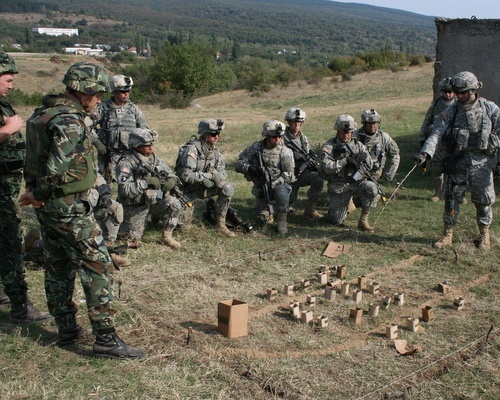When does a bug become a bug?
Who decides that it is a bug?
 How many legs does a lamb have if I say the tail is a leg? The answer is 4, just because I say the tail is a leg does not make it a leg!
How many legs does a lamb have if I say the tail is a leg? The answer is 4, just because I say the tail is a leg does not make it a leg!
Bugs should be obvious, but we say It’s not a bug, it’s a feature because often it isn’t obvious. Watson Humphrey felt that we should use the term defect and not bug because most people don’t take bugs seriously, so let’s use the term defect instead.
So when does a defect become a defect?
- When quality assurance tells you that you have a defect?
- When product management says that it is a defect?
- When the customer says that it is a defect?
The answer is: none of the above.
Now it might turn out that there is a problem and that code needs to change, but a defect only exists if:
code behaves differently than the requirements specification
This is important because most systems are under specified (if they are specified at all) and so when code misbehaves it is only a defect if the code behavior differs from the specification. We call defects undocumented features because we know that the problem is that the requirements were never written.
Incomplete and Inconsistent Requirements
Many organizations do not create sufficiently complete requirements before starting development, either because they don’t know how to capture requirements properly or because they don’t have resources capable of capturing complete requirements. Incomplete (and inconsistent) requirements and unrealistic deadlines often force developers into making decisions about how to implement features. The end result is that developers are regularly told that they have defects in their code.
 While this process is common, it is destructive. When requirements are under specified and inconsistent developers end up needing to perform serious rework. The rework will can require dramatic changes that will impact the architecture of the code.
While this process is common, it is destructive. When requirements are under specified and inconsistent developers end up needing to perform serious rework. The rework will can require dramatic changes that will impact the architecture of the code.
The time required to find a work around (if it is possible) is rarely included in the project plan. Complicating matters is that the organizations that are reluctant to spend time creating requirements also tend to underestimate their projects. This puts tremendous pressure on the engineering department to deliver; this promotes the 5 worst practices in software development (see Stop It! No… really stop it.)
Only 54% of Issues are Resolved by Engineers
The attitude that all defects must be resolved by the engineering department is severely misguided. Analysis by Capers Jones of over 18,000+ projects shows that only about 54% of all defects can be resolved by the engineers! (only the 3 highlighted rows below)
| Defect Role Category | Frequency | Role |
|---|---|---|
| Requirements defect | 9.58% | BA/Product Management |
| Architecture or design defect | 14.58% | Architect |
| Code defect | 16.67% | Developer |
| Testing defect | 15.42% | Quality Assurance |
| Documentation defect | 6.25% | Technical Writer |
| Database defect | 22.92% | Data base administrator |
| Website defect | 14.58% | Operations/Webmaster |
This means that precious time will be wasted assigning issues to developers that they can not resolve. The time necessary to redirect the issue to the correct person is a major contributing factor to fire-fighting
Getting Control of the Defect Process
![]() For most organizations fixing the defect process involves understanding and categorizing defects correctly. Organizations that are not tracking the different sources of defects probably have a bug tracker that has gone to hell. Here is how you can fix that problem, see Bug Tracker Hell and How To Get Out!
For most organizations fixing the defect process involves understanding and categorizing defects correctly. Organizations that are not tracking the different sources of defects probably have a bug tracker that has gone to hell. Here is how you can fix that problem, see Bug Tracker Hell and How To Get Out!
 At a minimum you need to implement the requirements defect, once you identify issues that are caused by poor requirements it will shine the white hot light of shame onto the resources that are capturing your requirements. Once you realize how many requirements defects exist in your system you can begin to inform senior management about the requirements problem.
At a minimum you need to implement the requirements defect, once you identify issues that are caused by poor requirements it will shine the white hot light of shame onto the resources that are capturing your requirements. Once you realize how many requirements defects exist in your system you can begin to inform senior management about the requirements problem.
Reducing Fire-Fighting
 The best way to reduce fire fighting is to start writing better requirements (or writing requirements 🙂 ). To do so you need to figure out which of the following are broken:
The best way to reduce fire fighting is to start writing better requirements (or writing requirements 🙂 ). To do so you need to figure out which of the following are broken:
- Not enough time is allocated to the requirements phase
- Unskilled people are capturing your requirements
In all likelihood both of these issues need to be fixed in your organization. When requirements are incomplete and inconsistent you will have endless fire-fighting meetings involving everyone (see Root cause of ‘Fire-Fighting’ in Software Projects)
Stand your ground if someone tells you that you have coded a defect when there is no documentation for the requirement.

 The
The 




 Additional resource:
Additional resource: 






